How to use mul function
The mul function is a function used to perform multiplication operations and is used to calculate the product of two or more numbers.

#In different programming languages, the mul function may have different usages. Generally speaking, the mul function is a function used to perform multiplication operations, used to calculate the product of two or more numbers. Here are some common usage examples of the mul function:
mul function in JavaScript:
function mul(a, b) {
return a * b;
}
console.log(mul(2, 3)); // 输出:6
console.log(mul(4, -5)); // 输出:-20In JavaScript, the mul function accepts two parameters a and b and returns their product.
mul function in Python:
def mul(a, b): return a * b print(mul(2, 3)) # 输出:6 print(mul(4, -5)) # 输出:-20
In Python, the mul function is similar to its usage in JavaScript. It accepts two parameters a and b and returns their product.
The mul function in C (using namespace std):
#include <iostream>
int mul(int a, int b) {
return a * b;
}
int main() {
std::cout << mul(2, 3) << std::endl; // 输出:6
std::cout << mul(4, -5) << std::endl; // 输出:-20
return 0;
}In C, the mul function accepts two integer parameters a and b and returns their product. Call the mul function in the main function and print the result.
These are just some examples of common uses of the mul function, and the specific usage depends on the programming language and context used. In actual development, pass appropriate parameters to the mul function as needed, and use its return value for subsequent operations.
The above is the detailed content of How to use mul function. For more information, please follow other related articles on the PHP Chinese website!

Hot AI Tools

Undresser.AI Undress
AI-powered app for creating realistic nude photos

AI Clothes Remover
Online AI tool for removing clothes from photos.

Undress AI Tool
Undress images for free

Clothoff.io
AI clothes remover

AI Hentai Generator
Generate AI Hentai for free.

Hot Article

Hot Tools

Notepad++7.3.1
Easy-to-use and free code editor

SublimeText3 Chinese version
Chinese version, very easy to use

Zend Studio 13.0.1
Powerful PHP integrated development environment

Dreamweaver CS6
Visual web development tools

SublimeText3 Mac version
God-level code editing software (SublimeText3)

Hot Topics
 1386
1386
 52
52


